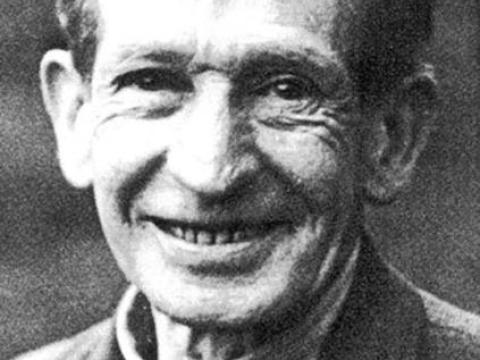A short biography of London anarchist John Humphrey
“To the younger generation, his life should be an inspiration to urge them to greater efforts. Humphrey never waited for others to make the initiative; he knew that causes are won by those who feel that they must act now, and not wait until a movement is popular. He was of those who toil in the night, when everything seems dark and hopeless, so that others should see the light”. Mat Kavanagh
John J. Humphrey , always known on the little pamphlets he produced in the 1930s as “John Humphrey (of Chalk Farm)” was remembered as an employee of the London Underground by George C ores and a Londoner by birth and an electrician by trade by Mat Kavanagh. As Kavanagh notes:” Early in life he became interested in social and scientific questions, and decided in his quiet, thorough way to devote his energy to the movement. To this end he spent his spare time in learning printing, for which he bought a printing press, and soon mastered the craft. His aim was to give the bottom dog a chance to air his views- in the words of William Morris, “to voice his unlearny dissent”. He wrote numerous pamphlets on Anarchy, but after the inception of Spain and the World he saw that there was not room for two Anarchist paper, so he started a paper, Community Life, devoted to building up communities”.
Cores struck up a close friendship with him and together they used Humphrey’s platen machine to produce Freedom in 1931 when it was faltering. As a result it appeared the next month, entirely produced by voluntary work. Humphrey also provided premises for Freedom at Malden Crescent, London NW1. The first issue was four-sided and Humphrey printed it with the help of his nephew Bob Finch “an all-round printing worker” who worked for a Lambeth firm. Cores realised that they needed help so learnt the craft of typesetting. Then they were reinforced by Fred Stroud, from Holloway, a French polisher, and he became “an expert voluntary compositor and machine operator”. Freedom was published as an eight page paper until August 1936. Cores noted that the platen press could only print one page at a time, an issue of 1,000 copies needing eight thousand impressions!
Furthermore, as Mat Kavanagh remarked:” All his work was done without pay. He worked all day in the Underground at his trade, and gave his spare time to printing and lecturing. He was always eager to teach any comrade how to print, for he believed that the printed word would travel further than the spoken word. Whenever a suppressed paper (Indian or Irish) reappeared, the police would visit his printer, but fortunately these visits were always fruitless. During the stormy days of the Irish struggle his work was invaluable, and very few knew of his efforts”. Cores wrote that Humphrey printed off anti-fascist leaflets for the Italian anarchist Anzani, which were circulated throughout Britain, and beyond (Anzani , as an “enemy alien” together with other Italian anarchists, died on the Arandora Star when it was torpedoed by a U-boat).
Albert Meltzer in his I Couldn’t Paint Golden Angels, refers somewhat disparingly to Humphrey with his “clapped- out press” and the fact that one of his interests was phrenology, going on to remark that:” Some old-fashioned atheists then felt it had superseded religion, which is the sort of thing I suppose that old reactionary G.K. Chesterton had in mind when he said that when you cease to believe in God you don't believe in nothing, but in anything.” As I wrote in my biography of James Tochatti, also interested in phrenology:” He lectured on a number of topics, including various reforms and pseudo-scientific topics like phrenology (it may be hard to believe today that reading bumps on the head was taken seriously as a science, but that was the case in the Victorian period, and phrenology was seen as a legitimate science by people such as Karl Marx).”
Humphrey, by now retired, was able to get through the guards at the camp where Kavanagh was interned during the war, according to Meltzer. “His advanced age and benign appearance must have made him seem to be harmless enough to let through."I can't think why you're here among the fascists," he grumbled to Matt. "They think I'm an enemy of the State." he replied. "Well, so you are, and have been these last forty years to my knowledge," he said, correctly but, as there were guards present, perhaps not too tactfully.”
Among the little four page pamphlets that Humphrey wrote and published were “A letter to Youth” produced for the Anarchist League of Youth (1935) “Sex origin and psychology: the biological basis of sex problems”, and, jointly written with fellow anarchist Wilf McCartney “An anarchist worker's view of the A.R.P. appeal to " Bill " : Dedicated to the proletarian youth movement” (Air Raid Precautions-A.R.P.- set up in the prelude to WW2 supplied gas masks and pre-fabricated shelters).
Nick Heath
Sources:
Cores, George. Personal Recollections of the Anarchist Past
Kavanagh, Mat. Obituary of Humphrey in Freedom April 5th, 1947
Meltzer, Albert. I Couldn’t Paint Golden Angels.




Comments